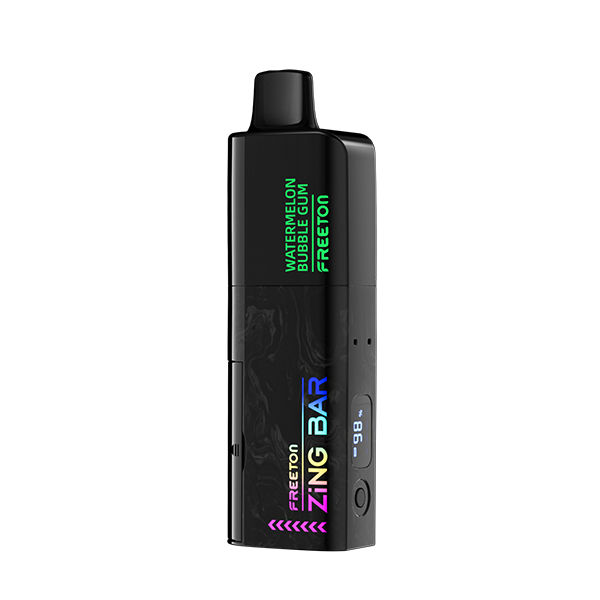
Are There Any Regulations Regarding the Use of Disposable Electronic Cigarettes in Public Places?
Disposable electronic cigarettes have emerged as a popular alternative to traditional smoking, providing smokers with a convenient and potentially less harmful option. In this section, we will delve into the basic concept of disposable electronic cigarettes, emphasizing their significance in the context of regulations governing their use in public spaces. Understanding these regulations is crucial […]
Disposable electronic cigarettes have emerged as a popular alternative to traditional smoking, providing smokers with a convenient and potentially less harmful option. In this section, we will delve into the basic concept of disposable electronic cigarettes, emphasizing their significance in the context of regulations governing their use in public spaces. Understanding these regulations is crucial for both users and policymakers, as it ensures a safe and informed environment for everyone involved.
Global Overview of Disposable Electronic Cigarette Regulations
Disposable electronic cigarette regulations vary significantly from one country to another, reflecting diverse cultural attitudes, public health priorities, and legislative frameworks. Understanding these differences is crucial for both users and policymakers to navigate the complex landscape of e-cigarette usage.
In the United States, for example, regulations concerning disposable electronic cigarettes are primarily under the jurisdiction of the Food and Drug Administration (FDA). The FDA has implemented stringent guidelines to monitor the manufacturing, marketing, and sale of these products. Age restrictions, labeling requirements, and limitations on flavors are some of the key aspects regulated to prevent youth access and ensure consumer safety.
Contrastingly, countries in the European Union, such as the United Kingdom, have adopted a harm reduction approach. While they have regulations in place, these regulations often focus on ensuring product quality and safety standards. The emphasis is on providing smokers with less harmful alternatives while discouraging youth initiation. This approach involves thorough product testing and clear labeling to inform consumers about the contents and potential risks.
In Asian countries like Japan and South Korea, regulations tend to be strict, with an emphasis on public health concerns. These nations often impose bans on specific ingredients, flavors, and marketing tactics to mitigate potential health risks. Additionally, some countries have outright bans on the sale and use of disposable electronic cigarettes.
Moving to the Middle East, regulations vary widely. Some countries, like the United Arab Emirates, have outright bans on e-cigarettes, while others, like Israel, have relatively lenient regulations, allowing their sale and use. These differences highlight the complex interplay between cultural attitudes, public health concerns, and legislative decisions.
Africa, too, showcases a diverse regulatory landscape. Countries like South Africa have implemented regulations, including restrictions on sales to minors and advertising, to balance public health with individual freedom. In contrast, some African nations lack specific regulations, leading to a booming but largely unregulated e-cigarette market.
Understanding these global variations is essential for stakeholders involved in the e-cigarette industry. By recognizing the diverse approaches taken by different countries, policymakers can make informed decisions, users can be aware of the legal implications, and manufacturers can adapt their strategies to comply with the specific regulations of each market. This global perspective underscores the need for continuous dialogue and international collaboration to create effective, evidence-based regulations that prioritize public health and safety while respecting individual choices.

Health Concerns Related to Disposable Electronic Cigarettes
Disposable electronic cigarettes, often touted as a safer alternative to traditional smoking, have nevertheless raised significant health concerns among experts and the public alike. This section delves into these concerns, shedding light on the risks associated with e-cigarette usage and exploring the impact of secondhand vapor exposure.
Studies and research findings have highlighted various health risks linked to disposable electronic cigarettes. One major concern revolves around the potentially harmful chemicals present in e-cigarette vapor. While e-cigarettes lack many of the harmful substances found in traditional cigarettes, they may still contain nicotine, heavy metals, and other toxic compounds. Prolonged exposure to these substances can lead to addiction, respiratory problems, and other adverse health effects, especially among young users.
Additionally, the aerosol emitted by e-cigarettes can be a source of concern. Fine particles, similar to those found in air pollution, are present in e-cigarette vapor and can penetrate deep into the lungs. This can exacerbate respiratory conditions and pose a risk, particularly for individuals with pre-existing lung diseases.
Secondhand vapor exposure is another area of apprehension. Studies have indicated that bystanders can be exposed to potentially harmful substances when e-cigarettes are used in indoor environments. While the levels of exposure are generally lower than those associated with traditional smoking, the long-term effects of this exposure are not yet fully understood, raising concerns about the overall impact on public health, especially in enclosed spaces.
Moreover, the rise of vaping-related illnesses, often associated with the use of e-cigarettes containing THC (the psychoactive compound in cannabis) or other illicit substances, has added another layer of complexity to the health concerns surrounding e-cigarettes. These incidents have underscored the importance of product quality control and regulation to ensure consumer safety.
In response to these health concerns, researchers and public health authorities have intensified efforts to study the long-term effects of e-cigarette usage. Regulatory bodies in various countries are also working to implement measures to mitigate risks, such as enforcing stricter product standards, limiting the availability of certain flavors, and raising awareness about the potential dangers associated with e-cigarette usage, especially among vulnerable populations like adolescents.
Addressing these health concerns requires a multi-faceted approach involving continuous research, stringent regulations, and comprehensive public education campaigns. By staying informed about the risks and working collaboratively, policymakers, healthcare professionals, and the general public can make well-informed decisions regarding the use of disposable electronic cigarettes and strive for a healthier, safer future.
Public Opinion and Awareness
Public opinion plays a crucial role in shaping regulations and policies related to disposable electronic cigarettes. In this section, we examine the results of surveys and studies reflecting public attitudes towards e-cigarette regulations. Additionally, we explore the efforts and campaigns aimed at raising awareness about these regulations among the general public. By understanding the societal perspective, readers will gain insights into the challenges faced by policymakers and advocates in shaping public opinion.

Future Trends and Emerging Policies
The landscape of disposable electronic cigarettes is constantly evolving, influenced by advancements in technology, shifting public opinions, and emerging policies. This section delves into the future trends of e-cigarette regulations and explores the potential implications of emerging policies on public spaces and individual choices.
A. Technological Advancements and Product Innovation:
Disposable electronic cigarette technology is expected to continue evolving, with companies investing in research and development to create safer, more efficient devices. Advancements such as temperature control, improved battery life, and better flavor delivery systems are anticipated. These innovations may impact regulations by necessitating updates to standards to ensure the safety and quality of new products entering the market.
B. Rise of Alternative Nicotine Delivery Systems:
Apart from disposable electronic cigarettes, alternative nicotine delivery systems like heated tobacco products and nicotine pouches are gaining popularity. These products present novel challenges to regulators, prompting them to consider comprehensive policies that encompass a wide array of nicotine delivery methods. Emerging regulations may focus on standardizing testing methods and labeling requirements across different products to provide consumers with clear information.
C. Focus on Harm Reduction and Smoking Cessation:
As more research emerges on the relative risks of various nicotine delivery methods, policies may increasingly lean towards harm reduction strategies. Some countries and regulatory bodies might emphasize supporting smokers in transitioning to less harmful alternatives, including disposable electronic cigarettes. Smoking cessation programs, coupled with regulations promoting the availability of safe and effective smoking alternatives, are likely to become more prevalent.
D. Global Harmonization of Regulations:
The divergent regulations across countries pose challenges for international travelers and businesses. Future trends may incline towards harmonizing e-cigarette regulations globally. Collaborative efforts between nations could lead to standardized guidelines, making it easier for both users and manufacturers to navigate the international market while ensuring consistent safety standards.
E. Youth Prevention and Education Campaigns:
Emerging policies are expected to intensify efforts to prevent youth initiation. Stricter age verification methods for online sales, bans on flavored products attractive to younger audiences, and comprehensive educational campaigns targeting schools and communities are likely to become prominent strategies. Policymakers will focus on preventing the e-cigarette industry from inadvertently targeting and addicting underage users.
F. Regulation of Online Sales and Marketing:
The rise of online sales platforms has created challenges in enforcing age restrictions and monitoring sales. Future policies might focus on regulating online sales channels more effectively, ensuring that age verification processes are stringent and penalties for non-compliance are severe. Moreover, regulations might scrutinize online marketing tactics, especially those aimed at young audiences, to curb the appeal of e-cigarettes to minors.
As disposable electronic cigarette technology continues to advance, policymakers and regulators face the challenge of balancing innovation and public health. By staying vigilant, remaining adaptable to new developments, and fostering international collaboration, future policies can strike a balance between providing smokers with safer alternatives and protecting vulnerable populations, ultimately contributing to a healthier society.
Conclusion
In conclusion, this research provides a comprehensive overview of disposable electronic cigarette technology, regulations, health concerns, public opinion, and future trends. By summarizing the key findings and insights from the research, this section emphasizes the importance of continuous monitoring and adaptation of regulations in response to evolving trends. It underscores the need for policymakers, researchers, and the public to work collaboratively in ensuring the responsible usage of disposable electronic cigarettes in the ever-changing landscape of smoking alternatives.































